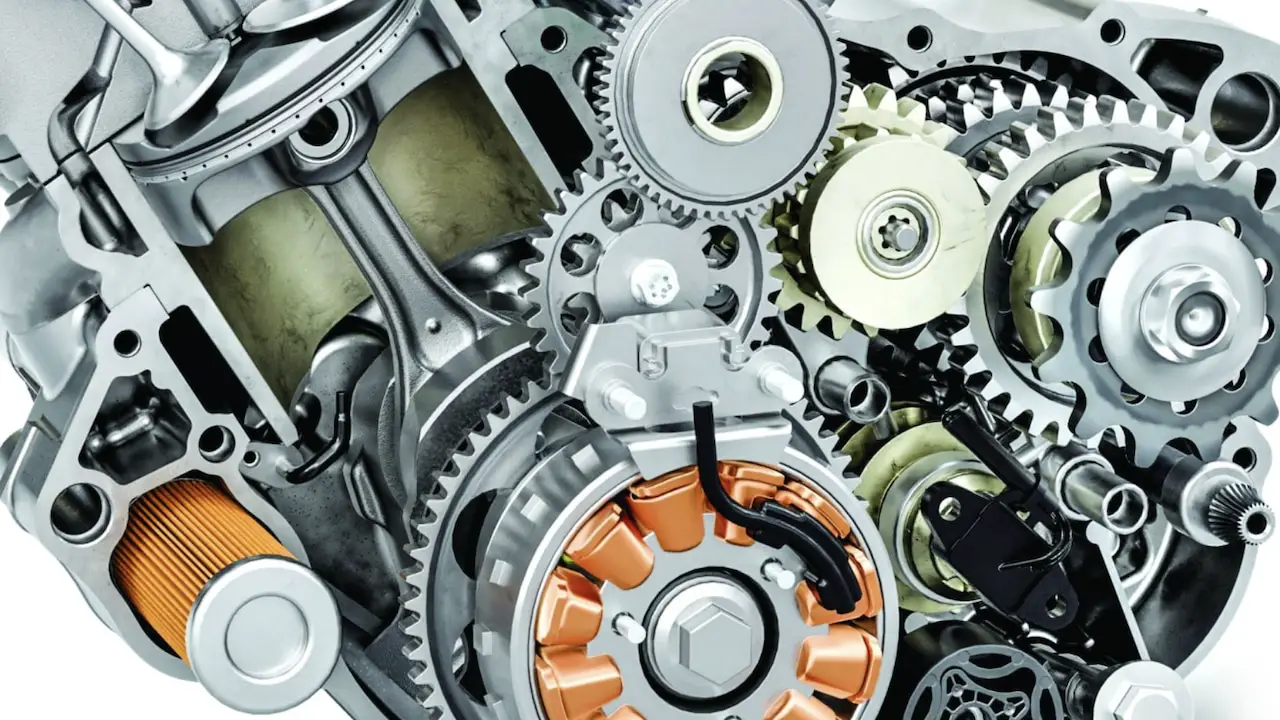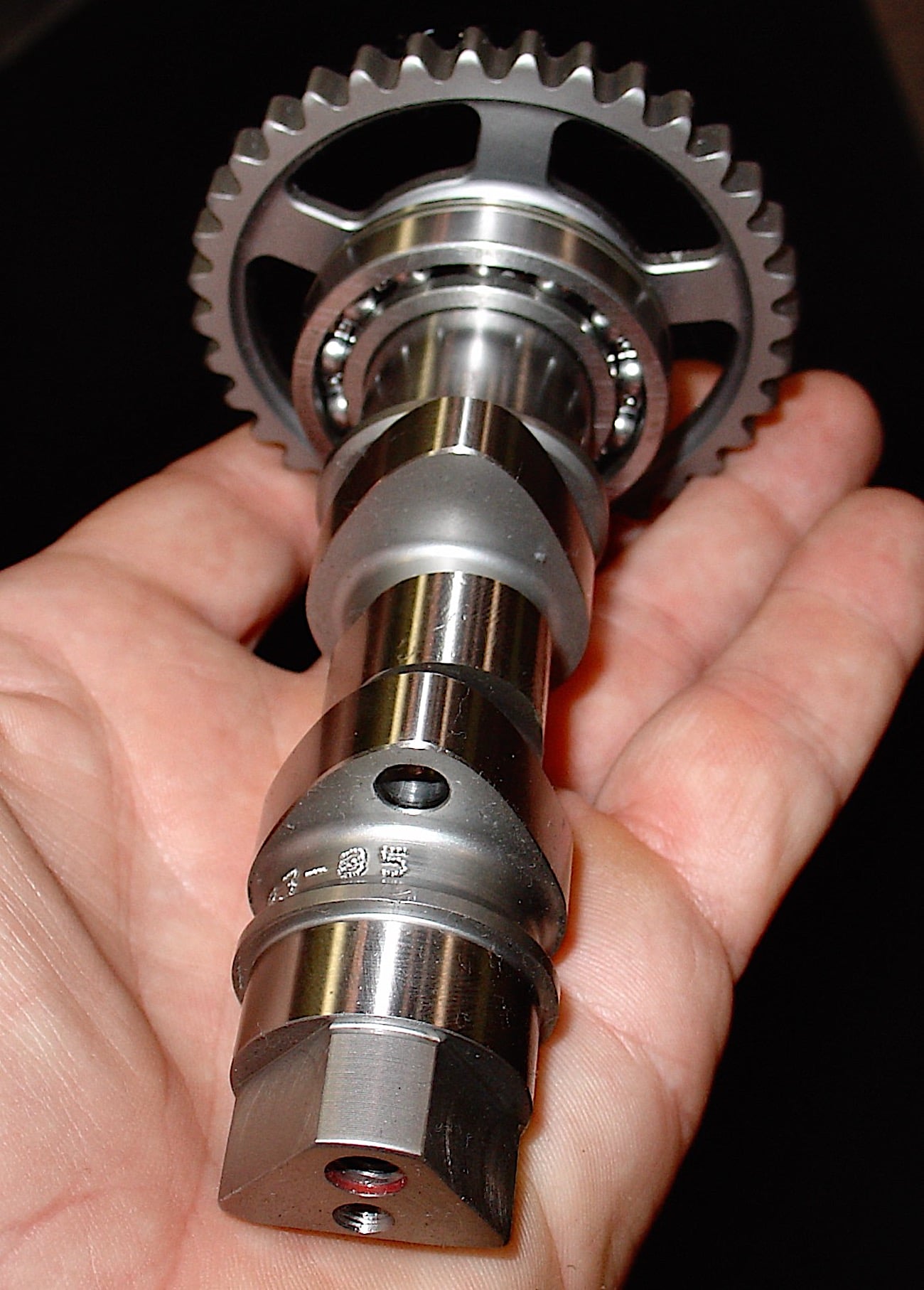

(1) Measurements. The size of an engine is determined by its bore-and-stroke ratio. The bore refers to the cylinder’s width, while the stroke is measured as the length the piston travels up and down inside of the cylinder from top dead center to bottom dead center. Together, these numbers determine the displacement of a cylinder, which is the volume of air and fuel that the piston pushes (or displaces) to create combustion and make power. The volume is most commonly calculated in cubic centimeters, and that’s how you get the term “250cc engine.”
(2) How it works. The simple explanation for how an engine works is “suck, squeeze, bang, blow.” Engines suck air and fuel into the combustion chamber, the piston comes up and compresses the air and fuel, the spark plug ignites an explosion that pushes the piston down, and the exploded fumes race out of the exhaust ports before the process starts again.
(3) 250F history. Since the first Yamaha 250 four-stroke came onto the scene in 2001, Yamaha has kept the bore-and-stroke ratio the same at 77.0mm x 53.6mm. KTM’s 250SXF started with a smaller 76.0mm bore and 54.8mm , but KTM increased the bore and shortened the stroke in 2013 to a 78.0mm x 52.3mm ratio. Honda and Kawasaki both followed the KTM design seven years later with the 2020 KX250 coming with a 78.0m x 52.2mm bore-and-stroke ratio (only 0.1mm off the KTM numbers), and Honda’s 2020 CRF250 came with an even bigger 79.0mm bore and even shorter 50.9mm stroke. However, KTM upped their game again in 2023-2024 with a much larger 81mm bore and much shorter 48.5mm stroke. A manufacturer can’t increase the bore without shortening the stroke or vice versa, because it would increase displacement and create a cheater bike. While the 2023-2024 KTM 250SXF and Husqvarna FC250 have a 81mm bore and 48.5mm stroke, the 2023 GasGas MC250F stayed at 78.0mm x 52.3mm The GasGas MC250F engine will be update to 81mm bore and 48.5mm stroke for 2024.
(4) Valve sizing. One of the primary reasons Kawasaki, KTM and Honda have gone with a bigger bore and shorter stroke is to increase valve size. The size of the intake and exhaust valves determines how quickly air and fuel can get in and out of the combustion chamber, which directly correlates with how much horsepower an engine produces. With a bigger bore, manufacturers can fit larger ports in the head.
(5) Camshafts. Camshafts are the components that open and close the valves, metering airflow into the combustion chamber. Aftermarket high-performance cams will allow the valves to open further and remain open longer, allowing more airflow and increasing the horsepower range. From an OEM standpoint, if the cams are maxed out on how high they can lift the valves, only making the ports bigger will increase flow, hence the reason for manufacturing a 250 engine with a bigger bore.
(6) 14,000 rpm. The max rpm (revolutions per minute) of the Kawasaki, KTM, Husqvarna, GasGas and Honda 250Fs is 14,000 rpm, meaning the piston is moving up and down a staggering 233 times per second. On the track, the Kawasaki and KTM, as well as Husky and GasGas, make their best power high in the rpm range. They work best when you don’t short-shift, but instead rev out each gear to the max. As for the Honda, the 2021 CRF250 was a top-end-only machine, but serious mods to the intake and camshafts have helped the new 2022-2023 CRF250 gain bottom-end power at the sacrifice of top-end power.
(7) Tipping point. Is a bigger bore always better? No. One reason is that a bigger bore positions the piston rings further from the spark plug, increasing the time it takes for the spark to ignite the next stroke cycle. Each engine has its tipping point. What works on a Kawasaki might not work on a Yamaha.
(8) Torque. Lengthening the stroke increases the amount of air and gas that can fit in the cylinder, which creates a bigger explosion. In general, stroking an engine will give it more torque, adding power in the low end, but it doesn’t benefit peak horsepower. Peak horsepower is generally boosted by a bigger bore and a shorter stroke because the shorter stroke allows the engine to fire more often and because of that it can use bigger valves with a bigger bore, creating more air flow through the cylinder. The downside to a bigger bore and shorter stroke is less bottom-end torque.
(9) Regulation. One way to keep costs down in motorcycle racing is by regulating the bore-and-stroke ratio of engines. If racers were allowed to develop their own ratios (while keeping at the displacement limits), it would open up a whole new realm of possibilities for modifications, and big-budget teams would have even more of an advantage than they already do.
(10) Aftermarket. When installing an aftermarket big-bore kit that uses the stock piston stroke length, generally the bottom-end torque is increased and the peak horsepower can be reached lower in the rpm range. The 270cc big-bore kits that are are popular for 250 models offer a more affordable way to achieve increased horsepower and torque; however, if you race in 250 classes, you’ll be cheating.
TEN THINGS YOU NEED TO KNOW ABOUT BORE & STROKE ON A 250F Motocross Action Magazine.





















You must be logged in to post a comment Login